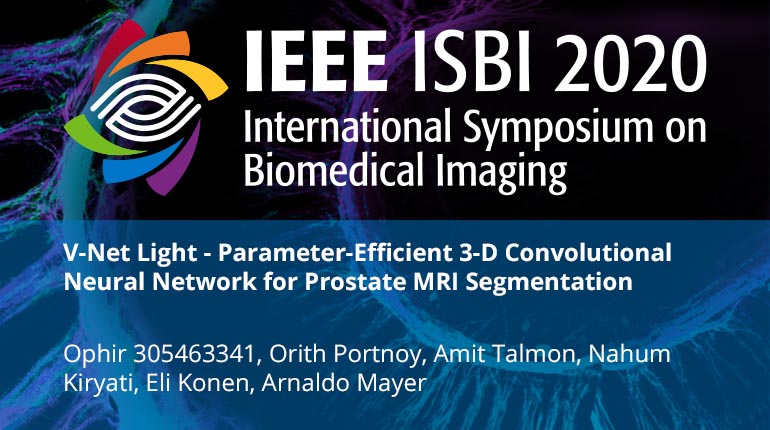Collection:

Prostate MRI segmentation has become an important tool for quantitative estimation of the gland volume during diagnostic imaging. It is also a critical step in the fusion between MRI and transrectal ultrasound (TRUS) for fusion guided biopsy or therapy. 3-D neural networks have demonstrated strong potential for this task, but require substantial computational resources due to their large number of parameters. In this work, we focus on the efficiency of the segmentation network in terms of speed and memory requirements. Specifically, we aim at reaching state-of-the-art results with ?smaller? networks, involving significantly fewer parameters, thus making the network easier to train and operate. A novel 3-D network architecture, called V-net Light (VnL) is proposed, based on an efficient 3-D Module called 3-D Light, that minimizes the number of network parameters while maintaining state-of-the-art segmentation results. The proposed method is validated on the PROMISE12 challenge data[1]. The proposed VnL has only 9.1% of V-net's parameters, 3.2% of its floating point operations (FLOPs) and uses only 9.1% of hard-disk storage compared to V-net, yet V-net and VnL has comparable accuracy.
- IEEE MemberUS $11.00
- Society MemberUS $0.00
- IEEE Student MemberUS $11.00
- Non-IEEE MemberUS $15.00
Videos in this product
V-Net Light - Parameter-Efficient 3-D Convolutional Neural Network for Prostate MRI Segmentation
Prostate MRI segmentation has become an important tool for quantitative estimation of the gland volume during diagnostic imaging. It is also a critical step in the fusion between MRI and transrectal ultrasound (TRUS) for fusion guided biopsy or therapy. 3-D neural networks have demonstrated strong potential for this task, but require substantial computational resources due to their large number of parameters. In this work, we focus on the efficiency of the segmentation network in terms of speed and memory requirements. Specifically, we aim at reaching state-of-the-art results with ?smaller? networks, involving significantly fewer parameters, thus making the network easier to train and operate. A novel 3-D network architecture, called V-net Light (VnL) is proposed, based on an efficient 3-D Module called 3-D Light, that minimizes the number of network parameters while maintaining state-of-the-art segmentation results. The proposed method is validated on the PROMISE12 challenge data[1]. The proposed VnL has only 9.1% of V-net's parameters, 3.2% of its floating point operations (FLOPs) and uses only 9.1% of hard-disk storage compared to V-net, yet V-net and VnL has comparable accuracy.
 Cart
Cart Create Account
Create Account Sign In
Sign In
